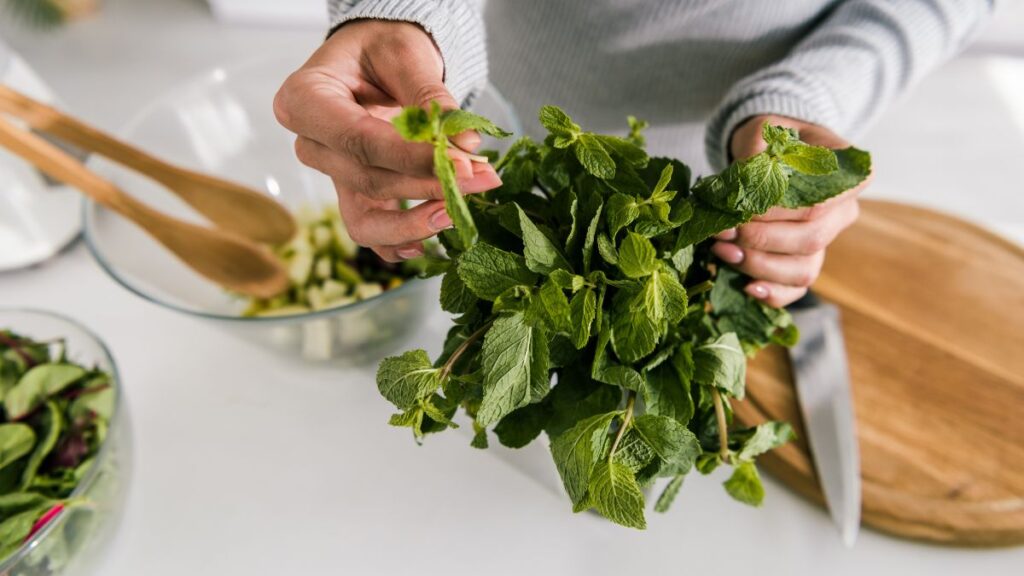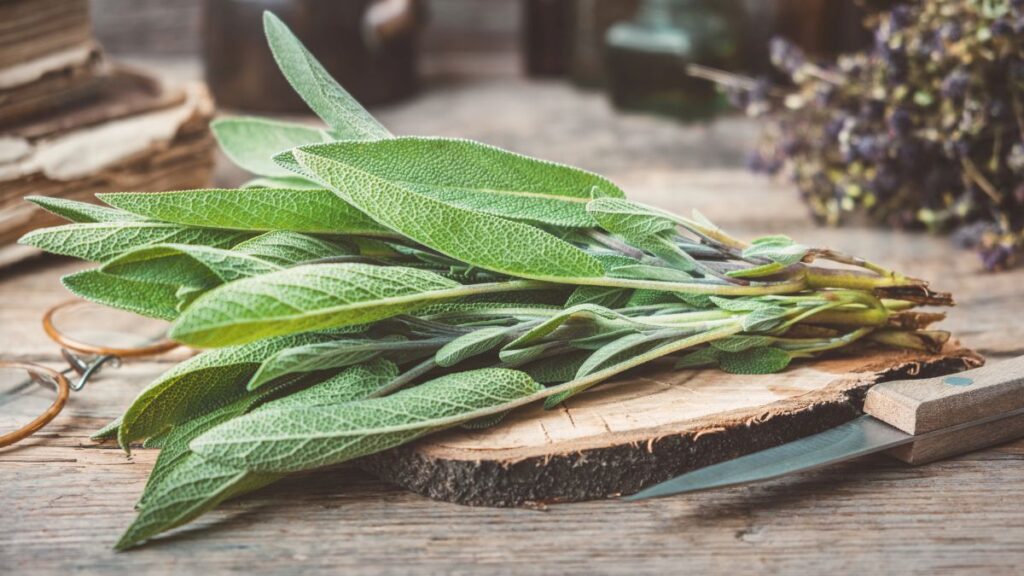Transform Your Garden into a Healing Haven with These 15 Herbs
Growing your medicinal herbs can be a rewarding and practical way to support your health naturally. These herbs offer a variety of healing properties, from soothing digestive issues to boosting the immune system. With a little care and attention, you can have a garden filled with beautiful herbs that are beneficial to your well-being.
Whether you’re new to gardening or a seasoned green thumb, these 15 healing herbs are easy to grow and can make a valuable addition to your home garden. Let’s explore the healing power of nature and learn how to cultivate these wonderful plants.
Aloe Vera

Aloe vera is a must-have in any healing garden due to its soothing properties. The gel inside its thick, fleshy leaves is excellent for treating burns, cuts, and skin irritations. Aloe vera is easy to grow, needing only a sunny spot and occasional watering.
It’s a hardy plant that can thrive both indoors and outdoors. Besides its topical uses, aloe vera can also be used in small amounts internally to aid digestion and support overall gut health. Just be cautious, as too much aloe can have a laxative effect.
Chamomile

Chamomile is well-known for its calming effects, making it a popular choice for herbal teas that promote relaxation and sleep. This gentle herb is easy to grow in well-drained soil and prefers a sunny location.
Chamomile’s delicate, daisy-like flowers are pretty and packed with anti-inflammatory and antioxidant properties. Harvest the flowers when fully open and dry them for use in teas or skin care remedies. Chamomile can also help soothe digestive issues, making it a versatile addition to your garden.
Lavender

Thanks to its calming fragrance, lavender is celebrated for its ability to reduce stress and anxiety. This herb thrives in sunny, well-drained locations and requires minimal maintenance. The fragrant purple flowers can be harvested and used in various ways, from making soothing sachets to creating homemade essential oils.
Lavender’s calming properties make it a great herb for improving sleep quality, while its antiseptic qualities can help treat minor cuts and scrapes. Growing lavender adds beauty to your garden and offers a natural way to promote relaxation and well-being.
Peppermint

Peppermint is a versatile herb that’s excellent for soothing digestive issues such as indigestion and bloating. It’s a vigorous grower and can quickly take over your garden, so it’s best to plant it in containers to keep it contained.
Peppermint prefers partial shade and moist soil, making it easy to care for in various conditions. The leaves can be used fresh or dried to make teas, infusions or even added to bathwater for a refreshing soak. Inhaling the scent of peppermint can also help relieve headaches and improve focus.
Echinacea

Echinacea, also known as coneflower, is famous for its immune-boosting properties. This hardy perennial is easy to grow in sunny spots with well-drained soil. The bright, daisy-like flowers are attractive and packed with medicinal benefits.
Echinacea is commonly used to reduce the severity and duration of colds and flu. You can use the flowers, leaves, and roots to make teas, tinctures, or capsules. Growing echinacea in your garden is a great way to have a natural remedy on hand during cold and flu season.
Calendula

Calendula, also known as pot marigold, is a bright and cheerful herb with powerful healing properties. It’s particularly effective for treating skin issues, such as cuts, scrapes, and rashes. Calendula prefers sunny spots and well-drained soil, making it easy to grow in most gardens.
The bright orange and yellow flowers can be harvested and made into soothing balms, oils, or teas. Calendula is also known for its anti-inflammatory and antimicrobial properties, making it a valuable herb for overall skin health.
Sage

Sage is a hardy herb that’s well-known for its ability to support respiratory health and digestion. It’s easy to grow in well-drained soil and prefers full sun. Sage leaves can be harvested and used fresh or dried in teas, cooking, or as a natural remedy for sore throats and coughs.
The herb’s strong flavor makes it a popular culinary herb, adding depth to dishes like stuffing and roasted meats. In addition to its culinary uses, sage has antimicrobial properties that can help fight off infections.
Lemon Balm

Lemon balm is a member of the mint family and is prized for its calming effects. This herb is easy to grow and thrives in sun and partial shade. The lemon-scented leaves can make teas that help reduce stress and promote relaxation.
Lemon balm is also effective in soothing digestive issues and can be used topically to treat cold sores. The plant’s attractive, bushy growth makes it a lovely addition to any garden, and its fragrant leaves can be harvested throughout the growing season.
Thyme

Thyme is a small, woody herb with potent antibacterial and antifungal properties. Growing in sunny, well-drained locations is easy and requires little maintenance. Thyme leaves can be used fresh or dried in cooking, teas, or as a natural remedy for coughs and colds.
The herb’s strong antimicrobial properties make it an excellent choice for boosting the immune system and fighting off infections. Thyme is also a great garden companion plant, helping deter pests and attract beneficial insects.
Rosemary

Rosemary is a fragrant herb known for improving memory and concentration. It grows easily in sunny, well-drained locations and requires minimal watering. Its needle-like leaves can be used fresh or dried in cooking, teas, or as a natural remedy for headaches and muscle pain.
The herb’s antioxidant properties help protect the body from damage caused by free radicals, making it a valuable addition to any healing garden. Rosemary’s strong scent also makes it a natural insect repellent.
Dandelion

Dandelion, often considered a weed, is actually a powerful medicinal herb with numerous health benefits. It’s easy to grow and can thrive in a variety of conditions. The entire plant, from the roots to the flowers, is edible and packed with nutrients.
Dandelion is particularly known for its ability to support liver health and detoxification. The leaves can be used in salads or teas, while the roots can be dried and made into a coffee substitute. Dandelion is also a natural diuretic, helping to reduce water retention and bloating.
Yarrow

Yarrow is a hardy perennial that’s known for its ability to stop bleeding and promote wound healing. It’s easy to grow in sunny, well-drained locations and can tolerate various soil types.
Yarrow’s feathery leaves and clusters of small, white flowers can be harvested and used fresh or dried in teas, poultices, or tinctures. The herb’s astringent properties effectively treat cuts, scrapes, and bruises. Yarrow is also known for reducing inflammation and supporting overall immune health.
St. John’s Wort

St. John’s Wort is a well-known herb for its ability to support mental health, particularly in alleviating symptoms of depression and anxiety. It’s easy to grow in sunny spots and prefers well-drained soil.
The bright yellow flowers can be harvested to make teas, tinctures, or oils. St. John’s Wort also effectively treats nerve pain and supports overall nervous system health. However, it’s essential to consult a healthcare provider before using this herb, as it can interact with certain medications.
Valerian

Valerian is a powerful herb known for promoting deep, restful sleep. It’s easy to grow in partial shade and prefers moist, well-drained soil. The root of the valerian plant is used for its medicinal properties, and it can be harvested and dried to make teas or tinctures.
Valerian is particularly effective for those who struggle with insomnia or anxiety. The herb’s calming effects make it a valuable addition to any healing garden, offering a natural way to improve sleep quality.
Comfrey

Comfrey is a fast-growing herb known for healing broken bones, bruises, and sprains. It grows easily in well-drained soil and can tolerate partial shade. The leaves and roots of the comfrey plant can be used to make poultices, salves, or infusions.
Comfrey is particularly effective in speeding up the healing process of injuries and reducing inflammation. However, using comfrey externally is important, as it can be toxic if ingested in large amounts. Growing comfrey in your garden provides a natural remedy for various aches and pains.
15 Practical Ways to Save Money During Retirement

Entering retirement doesn’t have to mean giving up a comfortable lifestyle. With strategic planning and simple adjustments, it’s possible to make the most of your retirement income and enjoy a financially secure life.
15 Practical Ways to Save Money During Retirement
15 Foods Only The Wealthy and Elite Can Eat Now

Culinary trends are constantly evolving, and some foods have become more than just sustenance—they’ve become status symbols reserved for the elite.







